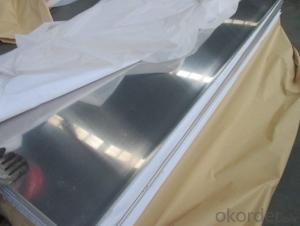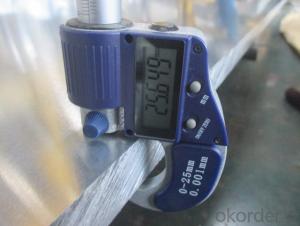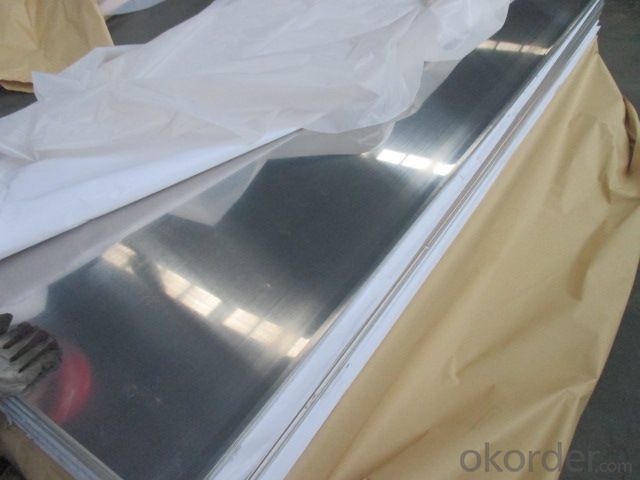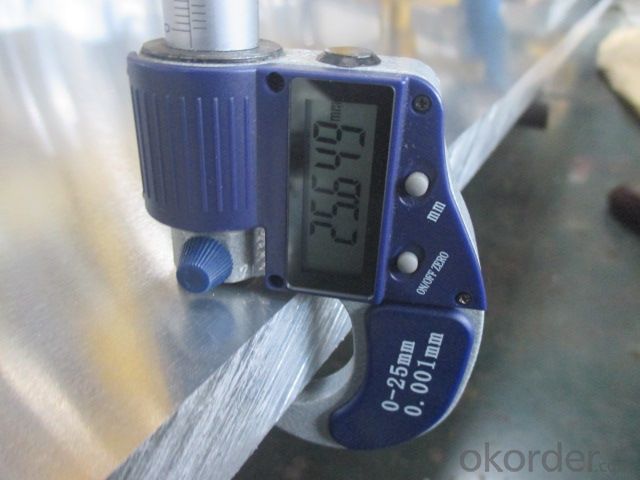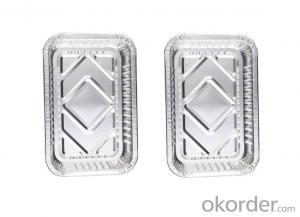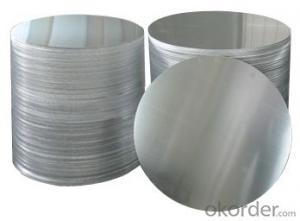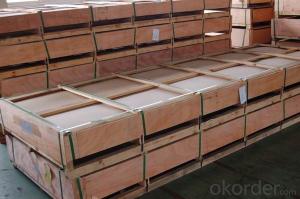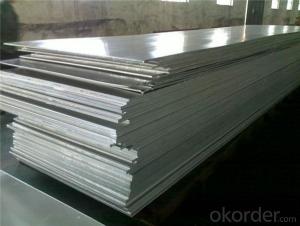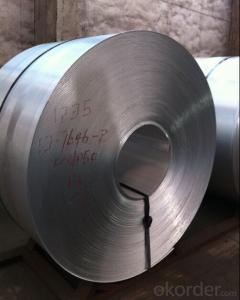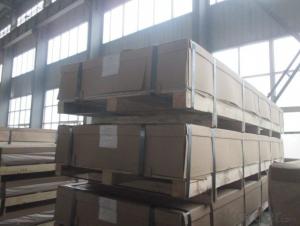Aluminum Sheets in Hawaii with Best Discount Price in Lower Price
- Loading Port:
- Shanghai
- Payment Terms:
- TT OR LC
- Min Order Qty:
- 9 m.t
- Supply Capability:
- 200 m.t/month
OKorder Service Pledge
OKorder Financial Service
You Might Also Like
Specification
1.Structure of Product Description
Cold rolled and hot rolled aluminum sheet is widely used in the field of construction field and decoration field, etc. There are many different grades, such as: 1000 series, 2000 series, 3000 series, 5052,6063,8011, etc.
The temper is include H14, H22, H44,H112,F,O, H114,etc.
2. Main features of the product
a. price
b.Frist-Class Service.
c. Shortest service.
3. Image.
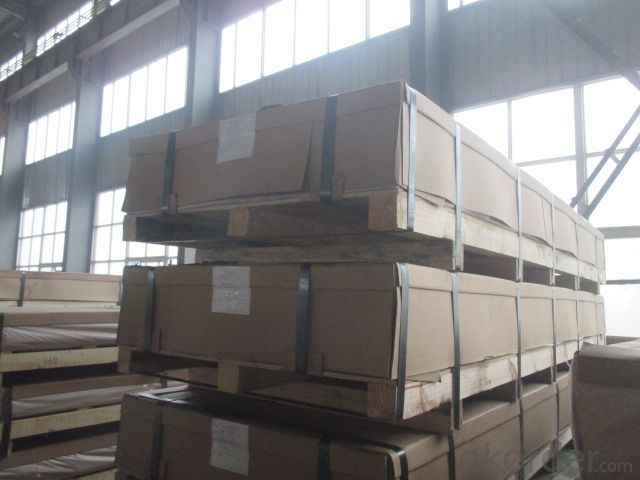
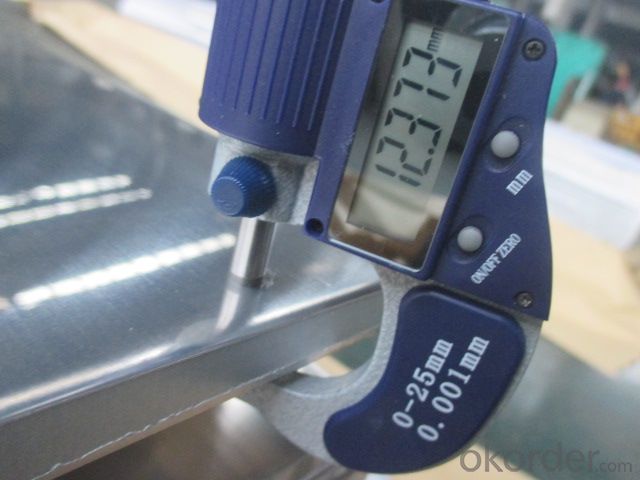
4. Product detailed sizes:
2000mm*2000mm,1000*1000MM, 2438mm,1220mm*2440mm,
5. FAQ:
What is the quality standard?
---Usually our standard is GB3880-2006 or others.
What is the width range?
---It is from 1000mm to 2500mm, etc.
---Normally it is from Japan, fiji, srilnakan, bangladesh, USA, ENGLISH, SINGAPORE, ETC.
What is your mainly products?
---Normally they are aluminum sheet,
checkered sheet, big-50bar checkered sheet, small-5-bar checkered sheet, etc.
PPGI, GI, HR STEEL SHEET, CR STEEL SHEET, mirror finish aluminium sheet, aluminum casting coil, etc.
- Q: What are the different methods of joining aluminum sheets?
- There are several methods of joining aluminum sheets, each with its own advantages and suitability for specific applications. These methods include: 1. Welding: Aluminum sheets can be joined by various welding techniques such as Tungsten Inert Gas (TIG) welding, Metal Inert Gas (MIG) welding, and Resistance Spot Welding (RSW). TIG welding is commonly used for thin aluminum sheets, offering precise control and high-quality welds. MIG welding is faster and more suitable for thicker sheets. RSW uses localized heat and pressure to create strong welds in a short time. 2. Adhesive bonding: This method involves using adhesives specifically designed for aluminum bonding. Adhesive bonding provides excellent strength, even distribution of stress, and corrosion resistance. It is frequently used in applications where aesthetics and weight reduction are important, such as in the automotive and aerospace industries. 3. Mechanical fastening: Mechanical fastening methods include riveting and bolting. Riveting involves joining aluminum sheets by deforming a rivet that passes through pre-drilled holes, while bolting uses screws or bolts to hold the sheets together. These methods are suitable for temporary or semi-permanent joints and offer easy disassembly if needed. 4. Friction stir welding: This innovative method uses a rotating tool to generate frictional heat between the aluminum sheets, creating a plasticized region that is stirred together to form a solid-state weld. Friction stir welding is particularly useful for large and complex aluminum structures, providing high strength and integrity. 5. Clinching: Clinching is a cold-forming process that uses a punch and die to join aluminum sheets without the need for heat or additional materials. The sheets are pressed together, creating a mechanical interlock and a strong joint. This method is cost-effective, efficient, and suitable for joining dissimilar metals. 6. Laser welding: Laser welding utilizes a high-energy laser beam to melt and fuse the aluminum sheets together. It offers precise control, minimal heat input, and high welding speeds, making it suitable for thin and delicate aluminum sheets. Laser welding also provides excellent aesthetics and minimal distortion. The choice of joining method depends on various factors such as the application requirements, material thickness, cost considerations, and desired joint strength. Each method has its own advantages and limitations, and selecting the most appropriate method is crucial to ensure a successful and durable joint.
- Q: Do 101 aluminum sheets have any specific insulation properties?
- 101 aluminum sheets do not possess any distinct insulation properties, as aluminum is an efficient conductor of both heat and electricity, failing to offer protection against temperature extremes. Nevertheless, these sheets can serve as reflective surfaces, effectively bouncing back heat or light. To achieve insulation, it is necessary to incorporate supplementary materials like foam or fiberglass in conjunction with the aluminum sheets.
- Q: Can the aluminum sheets be used for manufacturing medical equipment?
- Yes, aluminum sheets can be used for manufacturing medical equipment. Aluminum is a versatile and widely used material in various industries, including healthcare. It has several properties that make it suitable for medical equipment manufacturing. Firstly, aluminum is lightweight yet durable, which is beneficial for portable medical devices. It allows for easier handling and transportation of equipment, especially for healthcare professionals who may need to move them frequently. Secondly, aluminum has excellent corrosion resistance, making it suitable for medical applications where cleanliness and hygiene are crucial. It can withstand disinfection processes without deteriorating, ensuring the longevity of the equipment. Additionally, aluminum can be easily sterilized, which is essential for medical equipment. It can withstand high-temperature sterilization methods, such as autoclaving, without any adverse effects on its structural integrity. Moreover, aluminum is an excellent conductor of heat and electricity. This property is advantageous for medical equipment that requires efficient heat dissipation or electrical conductivity, such as surgical instruments or diagnostic tools. Furthermore, aluminum is a non-toxic material, making it safe for medical use. It does not leach harmful substances, ensuring that it does not pose any health risks to patients or healthcare professionals. In conclusion, aluminum sheets can indeed be used for manufacturing medical equipment due to their lightweight, durability, corrosion resistance, sterilization capabilities, thermal and electrical conductivity, and non-toxic nature. These properties make aluminum a suitable choice for various medical applications, contributing to the advancement of healthcare technology.
- Q: Can aluminum sheets be anodized for corrosion protection?
- Aluminum sheets have the capacity to undergo anodization in order to safeguard against corrosion. Anodizing initiates an electrochemical reaction that generates a safeguarding oxide layer on the aluminum's surface. This protective oxide layer exhibits exceptional resistance against corrosion and provides a robust and enduring shield. Various aluminum products, including sheets, can be subjected to anodizing to elevate their resistance against corrosion, enhance their aesthetic appeal, and prolong their lifespan. The anodizing process entails immersing the aluminum sheet in an electrolyte solution and applying an electric current, enabling oxygen ions to bond with the metal's surface and establish the safeguarding oxide layer. Anodized aluminum sheets are extensively employed in vital industries such as aerospace, automotive, construction, and electronics, where corrosion resistance is of paramount importance.
- Q: What are aluminum sheets used for?
- Aluminum sheets have a wide range of uses due to their unique properties and versatility. One of the most common applications is in construction, where aluminum sheets are used for roofing, siding, and cladding. Their lightweight nature, corrosion resistance, and durability make them ideal for these purposes. Aluminum sheets are also widely used in the transportation industry. They are commonly utilized in the manufacturing of automobiles, trains, and aircraft due to their high strength-to-weight ratio. Additionally, aluminum sheets are utilized in the production of trailers, truck bodies, and shipping containers, as they provide a lightweight yet sturdy solution. Another important application of aluminum sheets is in the manufacturing of consumer products. They are used for making household appliances, cookware, and electronics due to their excellent thermal conductivity and resistance to rust and corrosion. Aluminum sheets are also employed in the production of signage, billboards, and displays due to their ability to withstand various weather conditions. In the packaging industry, aluminum sheets play a crucial role. They are commonly used for making cans, foils, and lids due to their impermeability to light, moisture, and oxygen. Aluminum sheets help preserve the freshness and quality of food and beverages. Furthermore, aluminum sheets have various industrial applications. They are utilized in the fabrication of industrial machinery, equipment, and tools due to their excellent machinability and strength. Aluminum sheets are also used in the production of heat exchangers, solar panels, and electrical conductors due to their thermal and electrical conductivity. In summary, aluminum sheets are utilized in construction, transportation, consumer products, packaging, and various industrial applications due to their lightweight, corrosion resistance, durability, thermal conductivity, and electrical conductivity.
- Q: This question asks for methods to clean aluminum sheets to preserve their appearance.
- <p>To clean aluminum sheets and maintain their appearance, follow these steps: 1. Use a mild detergent mixed with warm water to create a cleaning solution. 2. Gently scrub the aluminum sheets with a soft cloth or sponge to avoid scratching the surface. 3. Rinse thoroughly with clean water to remove any detergent residue. 4. Dry the sheets immediately with a soft, dry cloth to prevent water spots. 5. For stubborn stains, use a non-abrasive cleaner specifically designed for aluminum. 6. Avoid using harsh chemicals or abrasive materials that can damage the aluminum's finish. Regular cleaning will help preserve the appearance and longevity of aluminum sheets.</p>
- Q: What is the typical shear strength of aluminum sheets?
- The shear strength of aluminum sheets can vary depending on several factors, including the alloy, temper, thickness, and manufacturing process. Typically, common aluminum alloys have a shear strength ranging from 207 to 310 megapascals (MPa) or 30,000 to 45,000 pounds per square inch (psi). It is crucial to understand that these values serve as general guidelines, and specific applications and conditions may result in variations. When dealing with critical applications, it is advisable to refer to the material specifications or consult professionals to accurately determine the shear strength requirements for the specific aluminum sheet in use.
- Q: how to avoid oxidation of aluminum sheet after wire drawing?
- leave it alone after wire drawing!aluminum sheet will formulate a layer of dense oxide film. So you don't need to worry about it! Don't often polish the aluminum wire, or they will be more and more slimsy, the oxide film is used for avoiding reoxidation.
- Q: Can aluminum sheet be used for automotive body panels?
- Yes, aluminum sheet can indeed be used for automotive body panels. Aluminum is a lightweight and corrosion-resistant material, making it desirable for improving fuel efficiency and increasing vehicle performance. It is widely used in the automotive industry to manufacture body panels, such as hoods, doors, fenders, and roofs, as it offers strength, durability, and design flexibility.
- Q: Are aluminum sheets suitable for use in cryogenic environments?
- Yes, aluminum sheets are suitable for use in cryogenic environments. Aluminum has excellent thermal conductivity, low density, and good mechanical properties at low temperatures, making it an ideal choice for applications in cryogenic environments. Additionally, aluminum has a low coefficient of thermal expansion, which allows it to maintain its structural integrity even under extreme temperature fluctuations.
Send your message to us
Aluminum Sheets in Hawaii with Best Discount Price in Lower Price
- Loading Port:
- Shanghai
- Payment Terms:
- TT OR LC
- Min Order Qty:
- 9 m.t
- Supply Capability:
- 200 m.t/month
OKorder Service Pledge
OKorder Financial Service
Similar products
Hot products
Hot Searches
Related keywords
